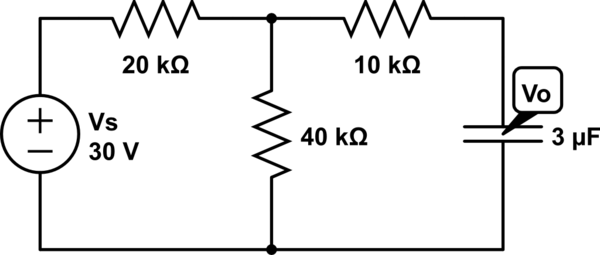I don't understand a particular feature of voltage division. Consider the circuit below (we are trying to find Vo):

simulate this circuit – Schematic created using CircuitLab
Now, if the 10-KOhm resistor was not there, it would be obvious that the voltage across the capacitor would simply be the Source Voltage multiplied by the voltage divisor
Vo = 30 x (40/(40+20))
However, we have a 10-KOhm resistor here in the same branch where the capcitor is. I always understood voltage as "pressure", and whenever voltage meets a resistor, some of that pressure is lost forever (i.e. until the current flows back into the voltage source).
Thus, in this case I would be inclined to think that the 10-Ohm resistor "eats up" some of that voltage and thus the Voltage across the capacitor would not be found using the classic voltage divider.
Well, I am wrong apparently, since the solution to this circuit is indeed given by the voltage divider.
So how come the 10-KOhm resistor does not affect the voltage across the capacitor?
